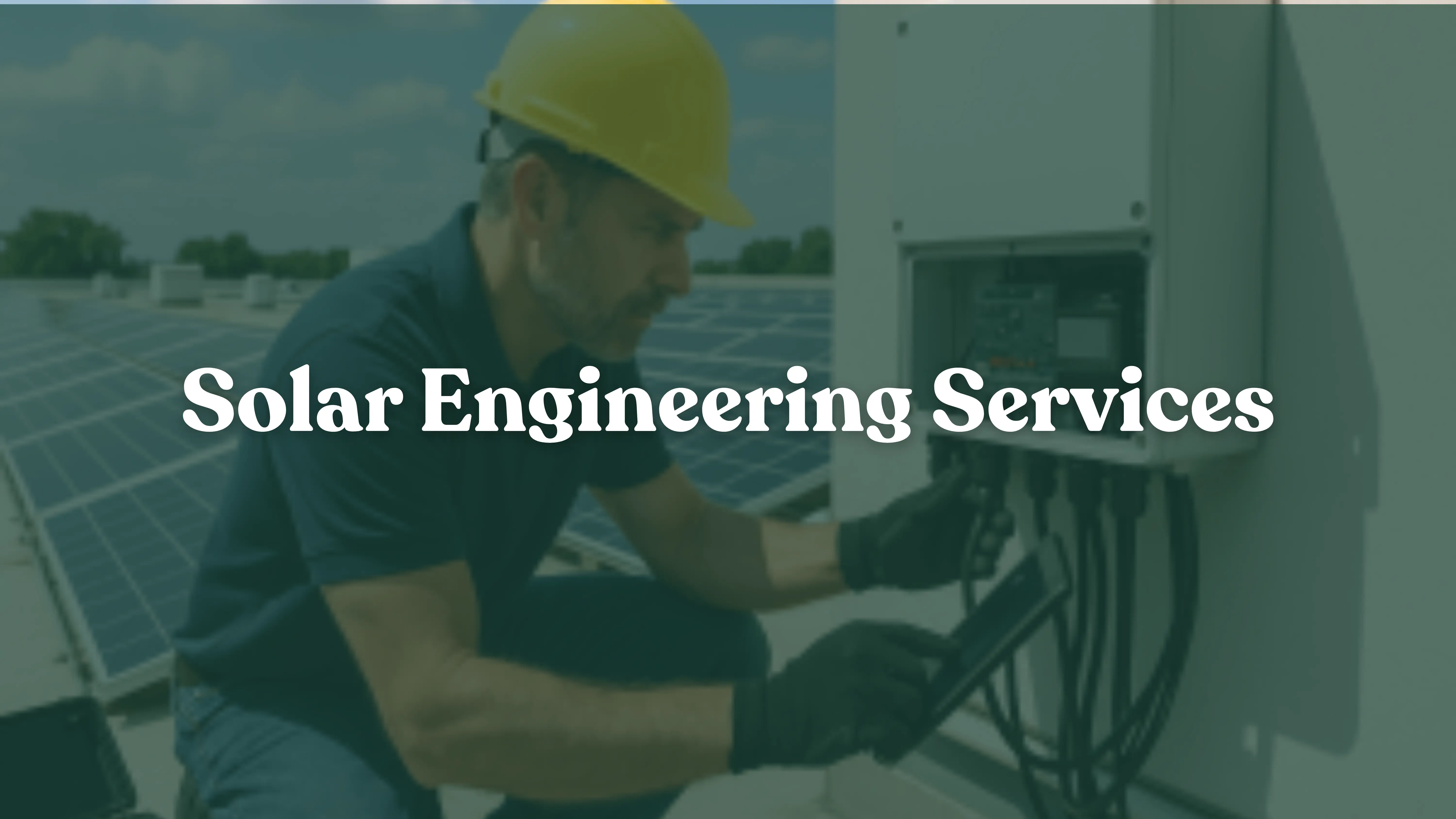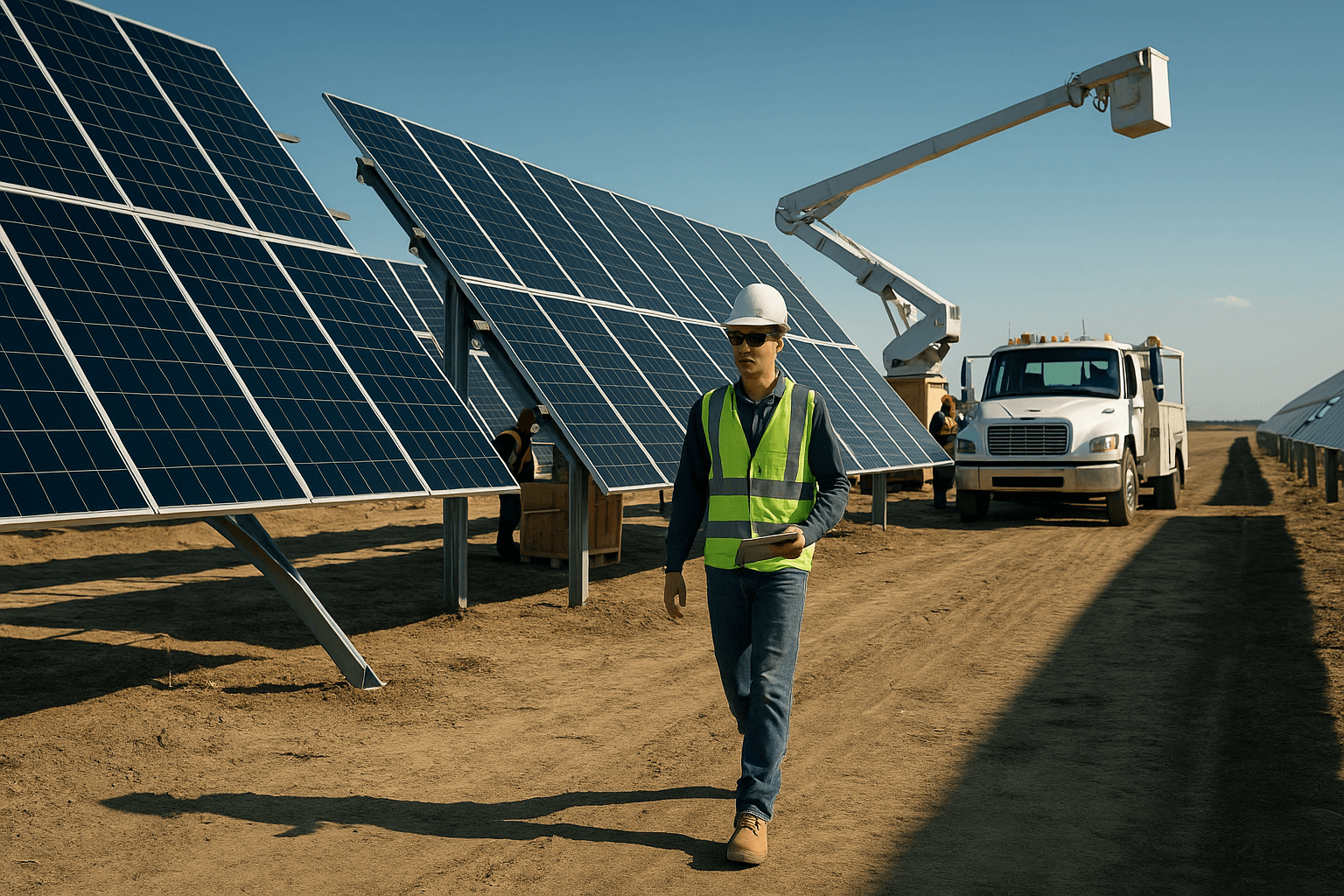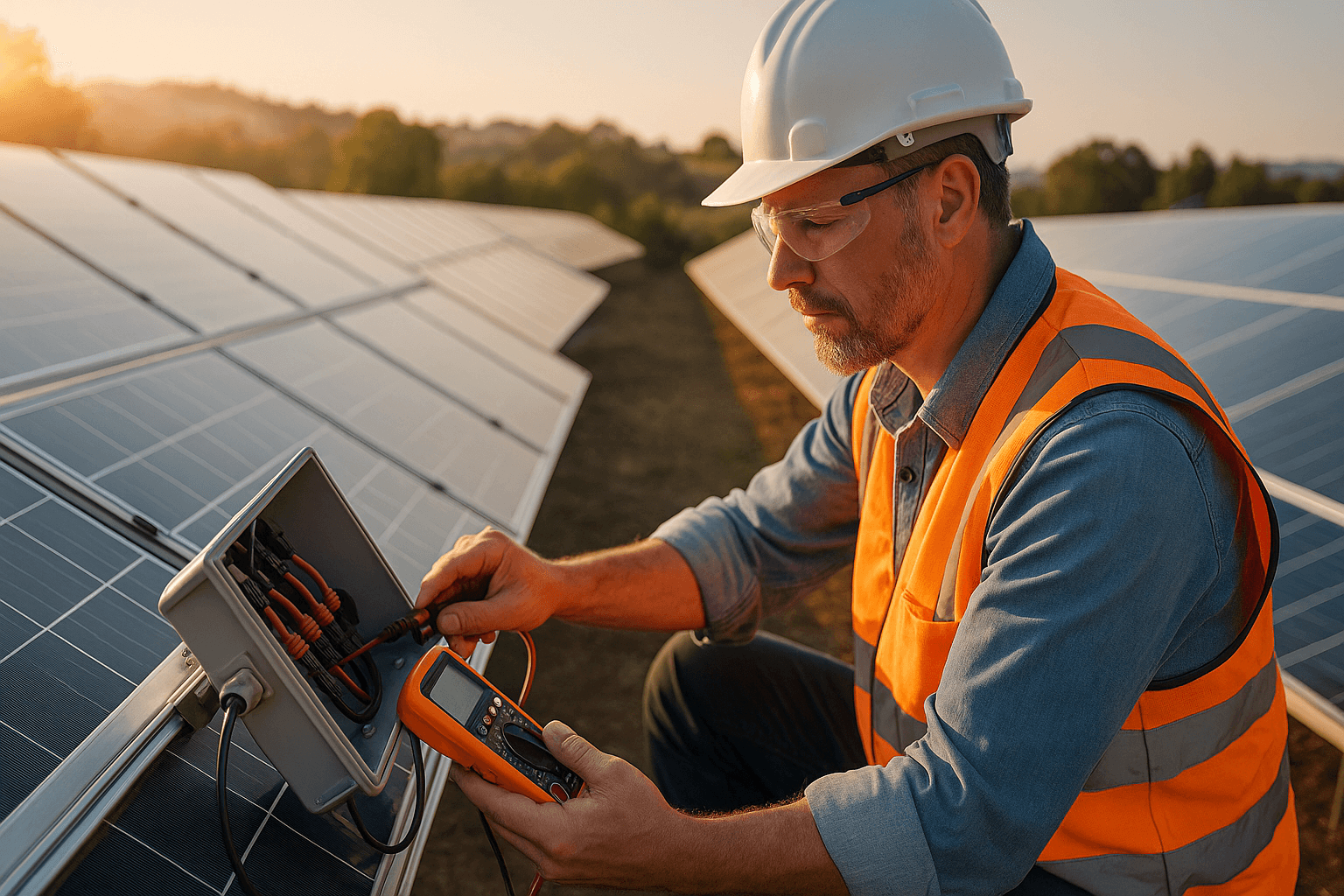Solar Engineering Services: That Deliver Real Results

If you’re a business leader considering solar, I’ll level with you—the engineering is what makes or breaks the entire investment. Anyone can throw panels on a roof. But true solar engineering services go far beyond layout sketches or spec sheets. They’re the difference between a system that runs at peak efficiency for 25 years, and one that degrades early, underperforms, or fails compliance checks.
When you’re spending six or seven figures on infrastructure, the details matter. And solar engineering services are where those details live.

What Are Solar Engineering Services, Really?
Let’s clear something up: solar engineering services aren’t just a checkbox on the project plan. They’re the actual architecture of your system. They include:
- Site evaluations based on shading, tilt, and azimuth
- Structural analysis to ensure load-bearing integrity
- Electrical schematics for compliance and safety
- Energy modeling to forecast system performance
- Interconnection design for utility approval
This is the work that determines whether your system qualifies for incentives, passes inspection, and generates what your PPA or ROI model promises.
Why Solar Engineering Services Are a Smart Investment
Engineering is the foundation. It drives every other decision—equipment choices, installation methods, even insurance underwriting. When I’m consulting for large commercial solar projects, the first question I ask is, “Who did your engineering?”
Because I’ve seen what happens when it’s rushed or farmed out. I once audited a 2 MW rooftop system where the design ignored snow load. The panels buckled under the first heavy winter. That’s the kind of mistake that doesn’t just cost money—it crushes confidence.

The Role of a Professional Engineer (PE) in Solar Projects
One thing you should always check: does your provider have a licensed Professional Engineer (PE) on staff? These are the people legally qualified to stamp drawings. Their stamp is more than just a permit requirement—it’s a quality assurance seal.
A stamped plan set ensures your system complies with:
- NEC codes (especially Articles 690, 705, 706)
- Local building codes and AHJ requirements
- Utility interconnection policies
Without proper engineering sign-off, even the best install crew is flying blind.
Key Phases of Solar Engineering Services
- Site Assessment and Data Collection
- A good engineering team visits the site to measure, document, and evaluate everything. That means drone surveys, irradiance testing, roof walk-throughs, and utility room inspections. If they’re working off Google Maps alone, run.
- Preliminary Design and Feasibility
- They’ll use software like HelioScope or PVsyst to simulate the system’s performance. This early modeling helps you avoid costly surprises later by showing:
-
- Expected energy yield
- Potential shade loss
- Overvoltage or derating risks
-
- Structural and Electrical Engineering
- This is where PE-level work starts. Engineers calculate racking loads, connection types, conduit runs, and transformer specs. The goal? Safe, code-compliant, efficient operation.
- Interconnection Design
- Your utility doesn’t care how much solar you want to install—they care how it hits the grid. Engineering teams that understand Rule 21 (CA), IEEE 1547, and UL 1741 SA standards streamline this process.
- Permitting and Stamping
- Once plans are finalized, they’re signed, sealed, and submitted for permitting. If your solar firm can’t provide PE stamps for your jurisdiction, you’ll be stuck waiting—or worse, redesigning.
Engineering for Commercial vs. Residential Projects
Let’s be blunt—residential installs don’t need this level of rigor. But commercial systems do. Especially when you’re dealing with:
- High voltage switchgear
- Roof warranty preservation
- Large-scale battery storage
- Smart inverters and load management
This isn’t a plug-and-play world. If your system powers critical business operations or feeds energy back to the grid, your engineering team must treat it like utility-grade infrastructure.

Questions You Should Ask Before Hiring
I’ve compiled a few real-world questions that separate the pros from the pretenders:
- Have you designed projects over 500 kW?
- Do you provide PE stamps in my state?
- What design tools do you use? (Look for PVsyst, AutoCAD, SKM, Revit)
- Are your designs optimized for energy yield or cost per watt?
- How do you model grid limitations or curtailment scenarios?
Partnering with the Right Engineering Team
You want a team that acts like an advisor—not a vendor. That means they:
- Proactively suggest better configurations
- Flag issues before they hit construction
- Understand the financing implications of design decisions
- Coordinate with installers and utility reps directly
I’ve worked with firms that save clients hundreds of thousands in avoided upgrades or change orders—all through better engineering.
How Solar Engineering Services Shape Long-Term ROI
Here’s a truth few talk about: every watt lost to inefficiency costs you money for decades. Engineering that prioritizes energy yield and equipment lifespan gives you a better return.
A good design:
- Lowers levelized cost of energy (LCOE)
- Extends inverter and battery life
- Simplifies future expansion
You’re not just buying kilowatts. You’re buying predictability. That starts with engineering.

Wrapping It Up
If you want your solar investment to pay off, don’t rush the engineering. Don’t assume every provider offers the same level of service. And definitely don’t settle for cookie-cutter plans that ignore your site’s unique conditions.
Solar engineering services aren’t the sexy part of the process. But they’re the smartest. And they’re the part that determines whether you’re still smiling in 10 years when your system is humming along, or sitting in a boardroom wondering what went wrong.
Get it right. Get it engineered.
Conclusion: Partnering with Expert Solar Engineering Services for Long-Term Success
Solar engineering services aren’t just about technical drawings and compliance stamps—they’re about building confidence in your energy future. When you invest in commercial solar, you’re making a 25-year commitment that demands precision from day one. The right engineering partner doesn’t just deliver compliant designs; they deliver systems that exceed performance expectations while minimizing long-term operational risks.
Professional solar engineering ensures your system qualifies for incentives, passes inspection, and generates what your PPA or ROI model promises. This level of precision and attention to detail is exactly what Energyscape Renewables brings to every commercial solar project. Their PE-stamped designs and comprehensive engineering approach ensure your solar investment delivers predictable returns for decades, not just years.
For innovative solar technology solutions that complement expert engineering, explore the cutting-edge offerings at Sunscape Solar, where advanced solar technologies meet practical implementation expertise. Together, proper engineering and innovative technology create the foundation for solar success that lasts.

croteam